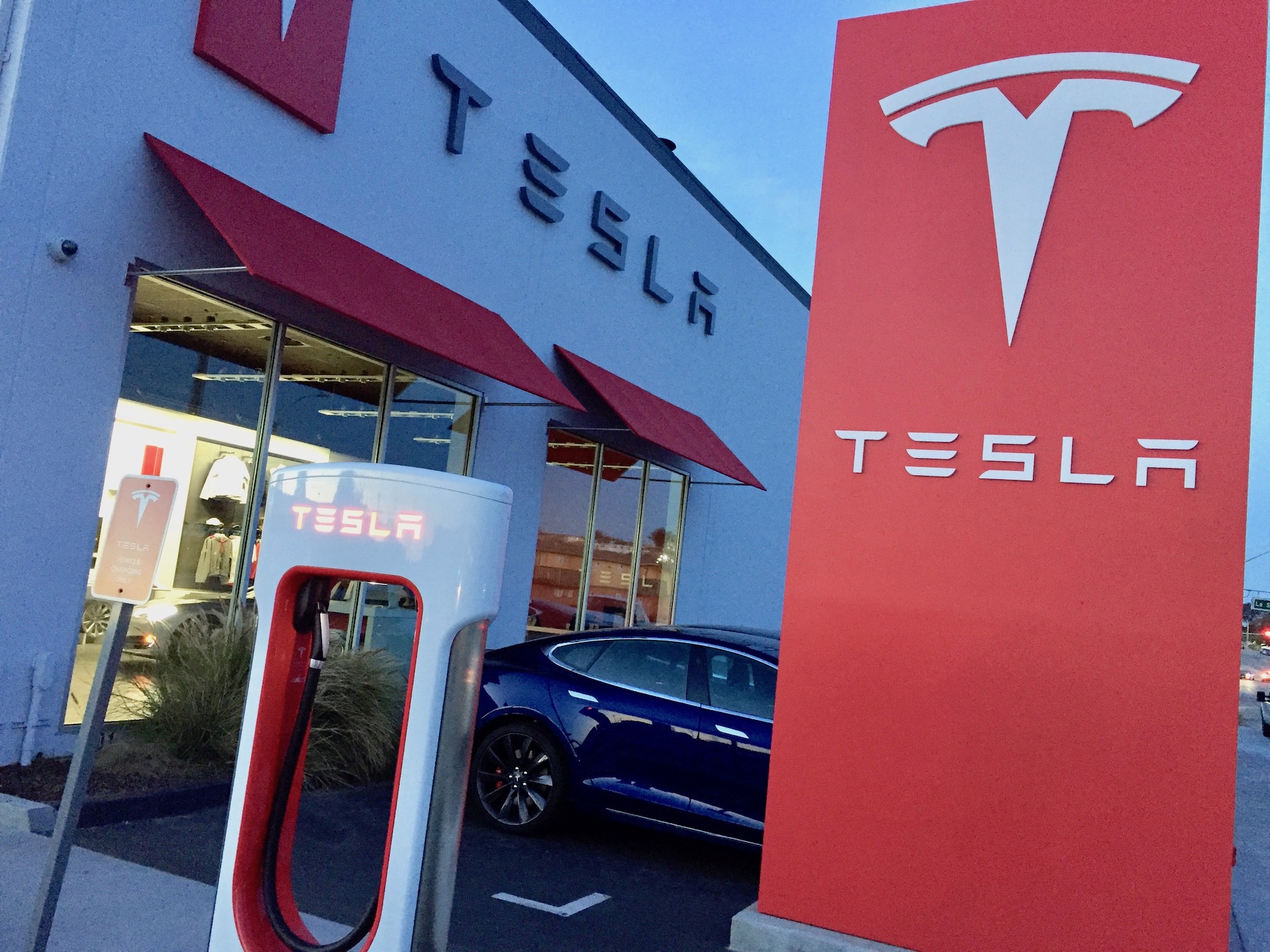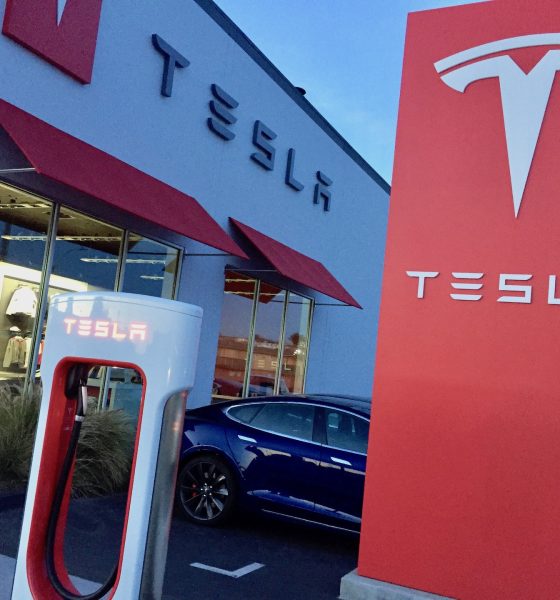

News
Tesla takes two big steps to secure a future in India
Tesla is taking a couple of relatively large steps to secure a place in India, where the automaker has been rumored to be working to establish a presence for several months.
With most of the major developments in Tesla’s India operation coming in the last few months, it was reported earlier today that the electric car company is now scouting for retail locations in India in major cities. Showrooms are Tesla’s “dealerships,” where company employees help set up test drives, explain products, and secure orders. It appears that Tesla is working to open these showrooms in three cities in India: New Delhi, Mumbai, and Bengaluru. All three cities hold significance in Tesla’s success in India.
New Delhi is the Indian capital and the second-most populated city in the country. Delhi could be a major market for Tesla in India. Due to its high population, the city could be a prime area for Tesla to perform employment recruiting and help with sales figures. Around 11 million people reside in the city.
Mumbai is the financial hub of India and holds the label of the country’s most populous city. Mumbai has the highest numbers of millionaires and billionaires in India and is one of the world’s top ten centers of commerce in terms of global financial flow.
Bengaluru is where Tesla is rumored to be setting up a manufacturing unit within India. This is still a relatively speculative report, and no public records have neither confirmed nor denied these claims. However, Tesla will set up a showroom or retail location in the city, which will only increase the company’s footprint within India’s largest cities.
Tesla India: The Three Directors leading Tesla into new lands
According to Reuters, Tesla has hired global property consultant CBRE Group Inc to survey potential locations to give the company access to affluent customers. This would line up with Tesla’s planned locations in New Delhi and Mumbai, two cities where financially healthy individuals are most frequently found within the country. The locations could be as large as 20,00-30,000 square feet each and will need to have enough room for showrooms and service centers.
In other developments regarding Tesla’s India project, the company has hired a former executive of India’s investment promotional group Invest India, Manuj Khurana, to lead its policy and business development efforts. Khurana will lobby for Tesla and work to develop relationships within the country as Tesla begins to make more strides in entering the Indian market.
For several years, Tesla has been hinting toward an eventual entrance into India. However, the project has been delayed several times for unknown reasons. CEO Elon Musk has teased an India entrance in the past, but this time, the developments seem to indicate that Tesla will be entering the market within the near future, looking to grow the relatively irrelevant EV market share that exists in the country. India only accounted for 5,000 total EV sales, a minimal fraction of the 2.4 million electric cars that made their way to consumers last year. However, the presence of an affordable and highly-supported EV maker like Tesla could change these numbers drastically. A domestic production plant would alleviate Indian car buyers from being exposed to import taxes, which have haunted consumer checkbooks for years, nearly doubling the cost of a car.

News
Tesla starts showing how FSD will change lives in Europe
Local officials tested the system on narrow country roads and were impressed by FSD’s smooth, human-like driving, with some calling the service a game-changer for everyday life in areas that are far from urban centers.

Tesla has launched Europe’s first public shuttle service using Full Self-Driving (Supervised) in the rural Eifelkreis Bitburg-Prüm region of Germany, demonstrating how the technology can restore independence and mobility for people who struggle with limited transport options.
Local officials tested the system on narrow country roads and were impressed by FSD’s smooth, human-like driving, with some calling the service a game-changer for everyday life in areas that are far from urban centers.
Officials see real impact on rural residents
Arzfeld Mayor Johannes Kuhl and District Administrator Andreas Kruppert personally tested the Tesla shuttle service. This allowed them to see just how well FSD navigated winding lanes and rural roads confidently. Kruppert said, “Autonomous driving sounds like science fiction to many, but we simply see here that it works totally well in rural regions too.” Kuhl, for his part, also noted that FSD “feels like a very experienced driver.”
The pilot complements the area’s “Citizen Bus” program, which provides on-demand rides for elderly residents who can no longer drive themselves. Tesla Europe shared a video of a demonstration of the service, highlighting how FSD gives people their freedom back, even in places where public transport is not as prevalent.
What the Ministry for Economic Affairs and Transport says
Rhineland-Palatinate’s Minister Daniela Schmitt supported the project, praising the collaboration that made this “first of its kind in Europe” possible. As per the ministry, the rural rollout for the service shows FSD’s potential beyond major cities, and it delivers tangible benefits like grocery runs, doctor visits, and social connections for isolated residents.
“Reliable and flexible mobility is especially vital in rural areas. With the launch of a shuttle service using self-driving vehicles (FSD supervised) by Tesla in the Eifelkreis Bitburg-Prüm, an innovative pilot project is now getting underway that complements local community bus services. It is the first project of its kind in Europe.
“The result is a real gain for rural mobility: greater accessibility, more flexibility and tangible benefits for everyday life. A strong signal for innovation, cooperation and future-oriented mobility beyond urban centers,” the ministry wrote in a LinkedIn post.
News
Tesla China quietly posts Robotaxi-related job listing
Tesla China is currently seeking a Low Voltage Electrical Engineer to work on circuit board design for the company’s autonomous vehicles.

Tesla has posted a new job listing in Shanghai explicitly tied to its Robotaxi program, fueling speculation that the company is preparing to launch its dedicated autonomous ride-hailing service in China.
As noted in the listing, Tesla China is currently seeking a Low Voltage Electrical Engineer to work on circuit board design for the company’s autonomous vehicles.
Robotaxi-specific role
The listing, which was shared on social media platform X by industry watcher @tslaming, suggested that Tesla China is looking to fill the role urgently. The job listing itself specifically mentions that the person hired for the role will be working on the Low Voltage Hardware team, which would design the circuit boards that would serve as the nervous system of the Robotaxi.
Key tasks for the role, as indicated in the job listing, include collaboration with PCB layout, firmware, mechanical, program management, and validation teams, among other responsibilities. The role is based in Shanghai.
China Robotaxi launch
China represents a massive potential market for robotaxis, with its dense urban centers and supportive policies in select cities. Tesla has limited permission to roll out FSD in the country, though despite this, its vehicles have been hailed as among the best in the market when it comes to autonomous features. So far, at least, it appears that China supports Tesla’s FSD and Robotaxi rollout.
This was hinted at in November, when Tesla brought the Cybercab to the 8th China International Import Expo (CIIE) in Shanghai, marking the first time that the autonomous two-seater was brought to the Asia-Pacific region. The vehicle, despite not having a release date in China, received a significant amount of interest among the event’s attendees.
Elon Musk
Elon Musk and Tesla AI Director share insights after empty driver seat Robotaxi rides
The executives’ unoccupied tests hint at the rapid progress of Tesla’s unsupervised Robotaxi efforts.

Tesla CEO Elon Musk and AI Director Ashok Elluswamy celebrated Christmas Eve by sharing personal experiences with Robotaxi vehicles that had no safety monitor or occupant in the driver’s seat. Musk described the system’s “perfect driving” around Austin, while Elluswamy posted video from the back seat, calling it “an amazing experience.”
The executives’ unoccupied tests hint at the rapid progress of Tesla’s unsupervised Robotaxi efforts.
Elon and Ashok’s firsthand Robotaxi insights
Prior to Musk and the Tesla AI Director’s posts, sightings of unmanned Teslas navigating public roads were widely shared on social media. One such vehicle was spotted in Austin, Texas, which Elon Musk acknowleged by stating that “Testing is underway with no occupants in the car.”
Based on his Christmas Eve post, Musk seemed to have tested an unmanned Tesla himself. “A Tesla with no safety monitor in the car and me sitting in the passenger seat took me all around Austin on Sunday with perfect driving,” Musk wrote in his post.
Elluswamy responded with a 2-minute video showing himself in the rear of an unmanned Tesla. The video featured the vehicle’s empty front seats, as well as its smooth handling through real-world traffic. He captioned his video with the words, “It’s an amazing experience!”
Towards Unsupervised operations
During an xAI Hackathon earlier this month, Elon Musk mentioned that Tesla owed be removing Safety Monitors from its Robotaxis in Austin in just three weeks. “Unsupervised is pretty much solved at this point. So there will be Tesla Robotaxis operating in Austin with no one in them. Not even anyone in the passenger seat in about three weeks,” he said. Musk echoed similar estimates at the 2025 Annual Shareholder Meeting and the Q3 2025 earnings call.
Considering the insights that were posted Musk and Elluswamy, it does appear that Tesla is working hard towards operating its Robotaxis with no safety monitors. This is quite impressive considering that the service was launched just earlier this year.








